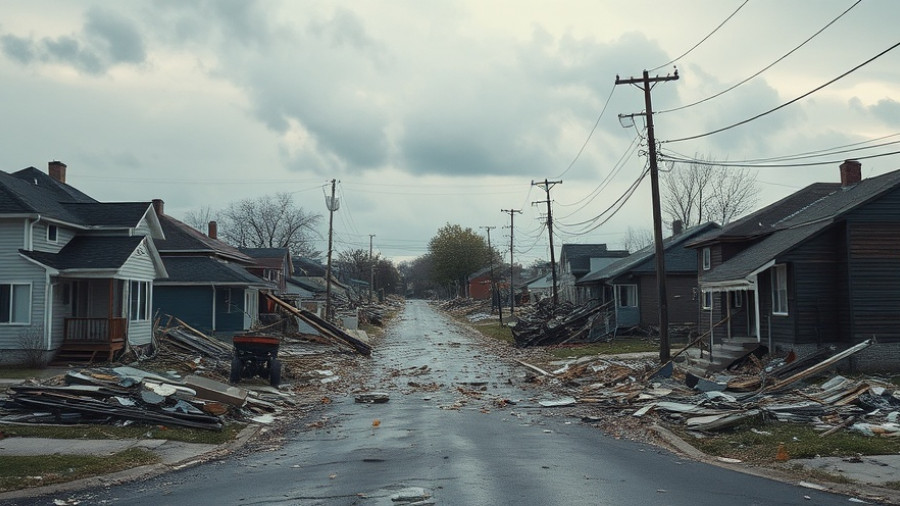
Understanding the Washington Supreme Court Ruling on PCB Liability
In a landmark ruling, the Washington Supreme Court reinstated a staggering $185 million verdict against Bayer’s Monsanto subsidiary for their involvement in chemical contamination at a school in Monroe, Washington. This ruling is significant as it not only reaffirms the jury's decision from a 2021 trial but also marks a pivotal moment in the ongoing legal battles surrounding polychlorinated biphenyls (PCBs), a class of chemicals widely used before being banned in the U.S. in 1979. The ruling emphasizes corporate accountability for hazardous materials that pose health risks, sending a message to companies that conceal the dangers of such substances.
The Impacts of PCB Exposure
PCBs have long been linked to serious health concerns. At the center of this lawsuit are three teachers from the Sky Valley Education Center, who reported a range of illnesses, including neurological issues and cancers, attributed to their prolonged exposure to leaking PCBs from school light fixtures. Over 200 individuals—including students and parents—have experienced similar health complications, raising grave concerns regarding the safety of school environments contaminated by toxic materials. The court's ruling has implications beyond financial compensation; it acts as a catalyst for further investigations into PCB safety in schools across Washington.
What This Means for Similar Lawsuits
The Washington Supreme Court's decision has broader implications, potentially affecting eight other related cases currently on appeal, all centered around PCB exposure in educational settings. Lawyers representing the plaintiffs argue that the ruling validates claims of widespread negligence and lack of transparency from Monsanto about the dangers of PCBs. As these individual cases move forward, the ruling sets a precedent that could reshape how environmental toxicities are addressed in court.
Legal and Corporate Reactions
In response to the ruling, Bayer has expressed disagreement and is weighing its legal options, indicating a possibility of further appeals to higher courts. This ongoing dispute illustrates the complex relationship between corporate entities and regulatory compliance—particularly in how companies communicate the risks associated with their products. On the other hand, advocates for the plaintiffs celebrate the ruling as a significant victory, highlighting the necessity of corporate transparency and accountability in protecting public health.
Future Implications for School Safety
The fallout from these cases extends into the realm of school safety policies. Washington lawmakers recently authorized studies to assess the presence of PCBs in educational facilities. Given that many buildings were constructed before their ban, proactive measures are vital. Even with legislative initiatives in place, awareness about PCB dangers needs to be heightened among parents and educators to prevent future exposure. Efforts should be focused not only on remediation but also on crafting policies that ensure safer environments for children.
Understanding the Insurance Claims Process
For those affected by similar toxic exposures and subsequent health issues, navigating the insurance claims process can often be confusing and overwhelming. Understanding the steps involved after a school-related accident, including how to file a claim and what documentation is required, is essential for achieving successful resolutions. Individuals can expect claim investigations to thoroughly assess the circumstances surrounding exposure, especially when they involve long-term health implications and possible corporate negligence.
In light of this ruling, it’s critical for parents and caregivers to remain informed about their rights and options should they need to pursue claims arising from toxic exposures. Knowledge about how to effectively communicate with claims adjusters and what evidence is required for a strong claim can significantly impact the outcome of potential lawsuits and claims settlements.
Call to Action
If you or someone you know has been affected by PCB exposure or other toxic materials, act now. Educate yourself on your legal rights, gather relevant documentation, and consider reaching out to a legal professional specializing in environmental toxicity cases. Understanding what to do following incidents involving potential chemical exposure can help you navigate the complexities of filing an insurance claim or pursuing legal action. Don't stay silent about the dangers; advocate for safety and health in your community.
 Add Row
Add Row  Add
Add 




Write A Comment